How to check if your weed is contaminated
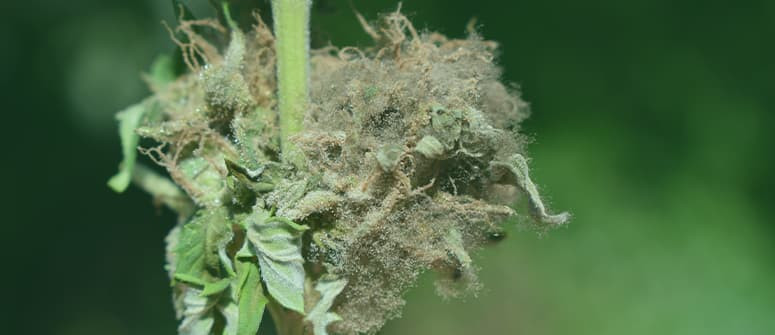
Whether it's dirt, mould, hair, talcum, other drugs, glass, or even lead and petrol, cannabis can contain all sorts of contaminants. Below, we'll teach you what contaminants can be found in weed, what threat they pose to your health, and how to detect them.
Contents:
Cannabis is regarded as a safe, non-toxic plant that has played a vital role in human well-being and industry for centuries—if not millennia. Unfortunately, the criminalisation of cannabis has significantly changed that; for decades, connoisseurs have had to be wary of contaminants used to make subpar bud seem heavier, more potent, or cover up its impurities. From dirt and hair to hairspray and lead, marijuana can contain all kinds of pollutants. Even in legal markets, cannabis has been found to contain traces of pesticides and high quantities of mould that, when burnt and inhaled, can cause serious health problems.
So, how can you tell if your weed is contaminated, laced, or mouldy? Read on for a close look at some of the most common marijuana contaminants, and clear instructions on how to tell apart top-shelf buds from garbage.
WHAT CONTAMINANTS CAN YOU FIND IN WEED?
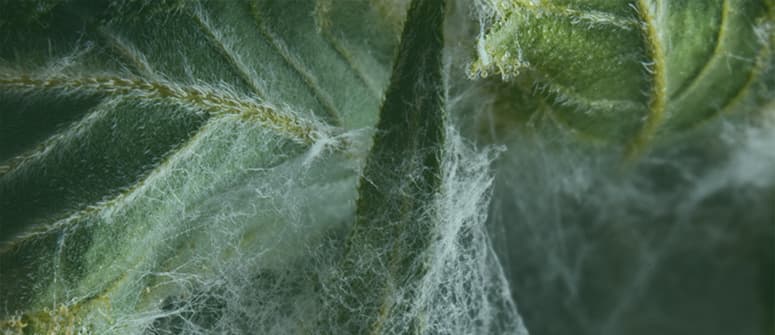
While we wish every gram of weed sold around the world was clean and grown to the highest possible standards, that simply isn't the case. Both in legal and illegal markets, cannabis can (and often does) contain a variety of contaminants, including:
- Dirt
- Fungi and bacteria
- Sugar
- Fertilisers, pesticides, and herbicides
- Hairspray
- Lead or other heavy metals
- Glass
- Talcum powder
- Other drugs
WHAT CAUSES CONTAMINATED WEED?
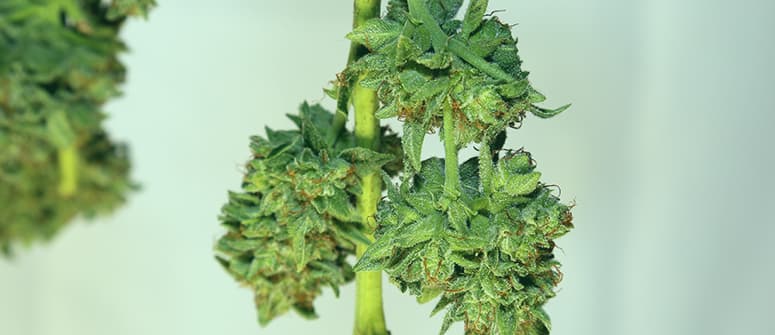
Weed can be contaminated for a number of reasons. Some are less concerning than others, and some are more common in illegal rather than legal cannabis markets (and vice versa). The following are the most common causes of contaminated cannabis.
THE WAY CANNABIS IS GROWN AND HANDLED
Grown outside, cannabis plants are naturally exposed to sand, soil, dirt, and critters throughout their growing cycle. As these plants flower and become more resinous, it's fairly common for small amounts of sand, dirt, twigs, and other contaminants present in an outdoor garden to become trapped in their buds. Similarly, as cannabis hangs to dry or is transported, dust, hair, and other nasties can get trapped in its sticky flowers.
And while these are all "natural" contaminants, no one really wants to be smoking them. Hence, many growers recommend bud washing, a technique that involves dipping freshly harvested and trimmed cannabis branches in buckets of water to remove as many potential contaminants as possible.
To wash your buds post-harvest, you'll want to:
- Harvest and wet trim your buds.
- Prepare three big buckets (big enough to submerge entire branches) as follows:
• Bucket 1: Fill with clean water + 2 teaspoons baking soda + 2 teaspoons lemon juice
• Bucket 2 + 3: Fill with clean water - Rinse each branch in buckets 1, 2, and 3 respectively. Make sure to move the branches around in the water to remove as much grit as possible.
- Hang your plants to dry in a very well-ventilated room.
Other, more concerning contaminants stemming from the way cannabis is grown and handled include residual pesticides. Like other crops, cannabis is often plagued by pests and pathogens, and most growers will regularly treat their plants with either natural or chemical pesticides. While it's very common practice to stop using pesticides once plants start to flower, a lot of weed still contains residual chemicals once it's harvested. Bud washing, again, can help to remove some of these potential contaminants.
Then there’s bacteria/fungi to consider. Despite the best efforts by growers (even on commercial farms), many cannabis plants become infested with bacteria or fungi as they grow. In January 2022, for example, Claybourne Co. launched a recall of a certain batch of its flower, which, after third-party testing, was found to be contaminated with Aspergillus niger (black mould).¹ Unfortunately, mould and bacteria are much harder to detect in harvested weed, and usually won't be removed through bud washing alone.
A LACK OF TESTING OR REGULATION IN LEGAL MARKETS
One of the main reasons weed is contaminated in places with a legal cannabis industry is a lack of testing and regulation. While cannabis itself is non-toxic, we just saw how the way it is grown and handled puts it at risk of contamination. A lack of testing and regulation, therefore, allows contaminated weed to make its way into consumers' hands.
In legal markets, this is a huge topic of discussion. On the one hand, consumers need regulated testing to ensure that the marijuana products they are buying are safe. On the other hand, the cannabis industry needs a regulated system that protects against:
- Lab-shopping: A common phenomenon where growers send their product to be tested at various labs (which all have different testing procedures) and submit the test results that best favour their product.
- False-negatives: Californian cannabis law, for example, states that if a sample of cannabis is reported to contain pesticides or unacceptable levels of fungus or bacteria, the entire batch of that product needs to be destroyed or recalled.² In some cases, positive lab test results have been reviewed and deemed false-positive, causing growers to unjustly face huge losses of valuable product.
While most legal cannabis markets have some kind of contamination testing framework in place, many fall short. California, for example, recently faced a cannabis shortage due to a backlog at the state's limited testing facilities.³ In 2017, Michigan also faced similar problems due to a lack of testing labs in the state. Luckily, as legal markets mature, these issues are getting addressed. California, for example, has announced new testing regulations for 2023 that hope to address many of the issues the state has faced regarding cannabis testing.⁴
PURPOSEFUL CONTAMINATION
The final, and arguably most worrisome, cause of contaminated weed is purposeful contamination. Especially in illegal cannabis markets, it isn't uncommon for cannabis producers and dealers to use contaminants to make their weed seem heavier, denser, and more potent as a way to maximise profits.
For example, it is by no means rare to find traces of sugar, sand, quartz, hairspray, talcum powder, or even fine glass shards in black-market weed. In some cases, cannabis users report finding traces of lead and other heavy metals likely used to make the product heavier. In the best of cases, you might find some oregano, green tea, or another type of green plant material mixed in with the herb you got from a sketchy source.
Finally, some smokers also choose to purposefully lace their cannabis with other substances. A joint sprinkled with cocaine, for example, is colloquially known as a "primo". It's also not unheard of for users to mix cannabis with MDMA, PCP, and other substances, and some black market dealers have been known to lace their weed with synthetic cannabinoids in an attempt to make their product seem more potent.⁵
WHAT ARE THE RISKS OF CONTAMINATED WEED?
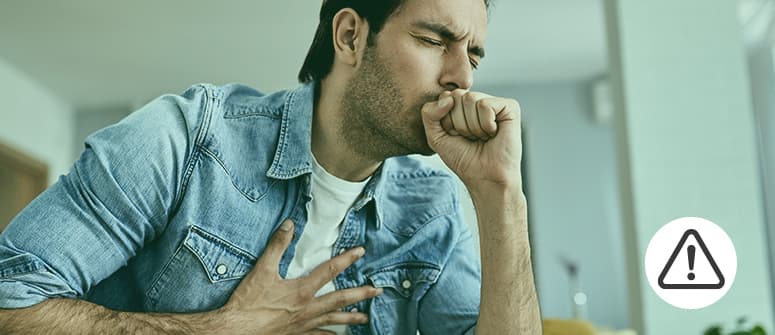
There are serious risks associated with smoking contaminated weed. Combusting and inhaling dirt, soil, sand, and quartz, for example, can irritate and inflame the respiratory tract, and, in severe cases, cause lung diseases such as pneumoconiosis and pneumonia. Similarly, smoking weed contaminated with hairspray, traces of fertiliser or pesticides, or heavy metals like lead exposes you to a toxic mix of chemicals that aren't safe to eat, let alone burn and inhale. In 2007, for example, the Leipzig University Hospital in Germany reported 35 cases of lead poisoning from smoking contaminated cannabis.⁶
If you thought the risks of smoking contaminated marijuana ended there, think again. Smoking weed with high amounts of fungal or bacterial contaminants can be very detrimental to your health as well. People with asthma, allergies, or weakened immune systems are particularly at risk of suffering serious consequences after smoking mouldy bud. While it might only bring healthy individuals to cough or feel nauseated, mouldy weed can cause at-risk people to experience:
- Sinus infections
- Coughing, wheezing, and shortness of breath
- Serious lung infections that can affect the central nervous system and brain
Aspergillus, Mucor, and Cryptococcus, for example, are three genera of fungi that have all been detected in weed samples grown in Northern California.⁷ Aspergillosis (an infection caused by inhaling Aspergillus fungi) can cause allergy-like symptoms in some patients, and—in more serious cases—can cause cavities and "fungus balls" in the lungs that can potentially spread to other parts of the body.⁸
Cryptococcus infections can be equally detrimental. A 2018 case study published in the British Medical Journal describes a case of Cryptococcal meningitis in a daily cannabis smoker, who experienced symptoms such as fatigue, dizzy spells, and severe memory loss (to the point of forgetting her own name).⁹
Finally, smoking drug-laced cannabis also poses health risks. First and foremost, the effects of combining cannabis with other substances, like cocaine, for example, can be extremely unpleasant, especially if you're not familiar with the effects. More importantly, however, smoking laced cannabis puts you at risk of the health effects associated with the added drugs, any possible pollutants they might contain, and the interaction of their active compounds with the active ingredients in cannabis.
HOW TO SPOT CONTAMINATED WEED
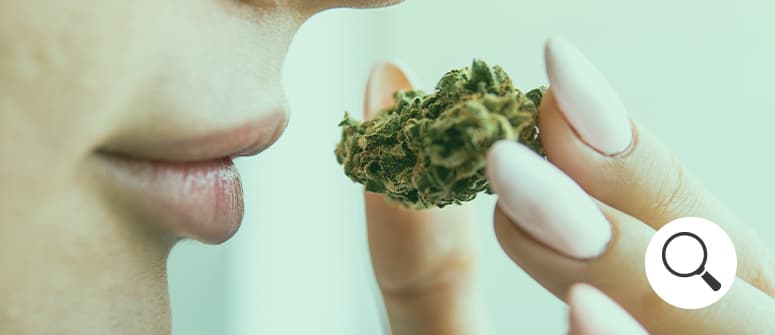
If you're wondering whether your weed is contaminated, observing the colour, texture, scent, taste, and smoking experience can help you spot potential pollutants, or at least realise if there's something a little off about the bud you're planning on smoking. Here's what to look out for when checking for contaminated bud.
COLOUR AND APPEARANCE
Before you light up, it's always important to inspect your weed closely, ideally with a microscope or jeweller's loupe. Even when smoking your own home-grown weed that you know isn't contaminated, taking a few minutes to inspect your buds before sticking them in the grinder can keep you from smoking dog hair or dirt (which are all around us). When inspecting your bud visually, look out for:
- Dirt, sand, hair, or fine rocks
- Whitish, crystalline substances that aren't trichomes (hairspray, for example, looks similar to snow when it dries)
- Mould (Fusarium and Botrytis cause cannabis buds to turn brown or black, while Aspergillus forms a white, cloudy mould on and inside buds)
- Whitish powders, such as talcum powder (which is sometimes added to weed to make it heavier and appear more resinous)
TEXTURE
After visually inspecting your weed, take some time to check its texture by feeling it in your hand and prying apart a few buds. High-quality weed should spring back slightly when squeezed gently between the fingers, and feel slightly sticky (though some strains develop dense buds that might resist a little more when squeezed). Bud that feels grainy, rock-hard, or unnaturally sticky, on the other hand, may be contaminated with dirt/sand, hairspray, or talcum powder. Meanwhile, bud that's still soft and wet to the touch probably wasn't dried and cured properly and could contain mould.
SCENT / TASTE
Like colour, appearance, and texture, the way weed smells says a lot about its quality. While every weed strain will smell a little different, there are a few telltale odours that can help you separate the fresh, potent, quality weed from the garbage. Overly strong chemical aromas could be a sign of weed that's been sprayed with hairspray or even gas (yep, it's not unheard of for shifty dealers to gas their weed with petrol or skunk spray in an attempt to pass their anonymous clobber off as Diesel or Skunk), while clean, clay-like aromas could hint of talcum powder. Finally, moist, improperly cured weed will smell fresh and grassy, while mouldy buds will have a rotten aroma, sometimes with strong hints of ammonia.
SMOKING EXPERIENCE
Analysing the way weed smokes and burns is arguably one of the best ways to test its quality. Discerning smokers will look for weed that's smooth to smoke, flavourful (citrus, mango, strawberry, diesel, pepper, and herbal flavours/aromas are all common to top-shelf cannabis), and burns cleanly. Clean weed should form a white ash, while weed that burns black could be humid or contain traces of fertiliser or pesticides. Any discomfort in your mouth, throat, or lungs as you smoke can also be a sign of contaminated weed, while sparks in your joint/bowl are a telltale sign that your weed contains chemical pollutants.
SHOP DILIGENTLY (IN LEGAL MARKETS)
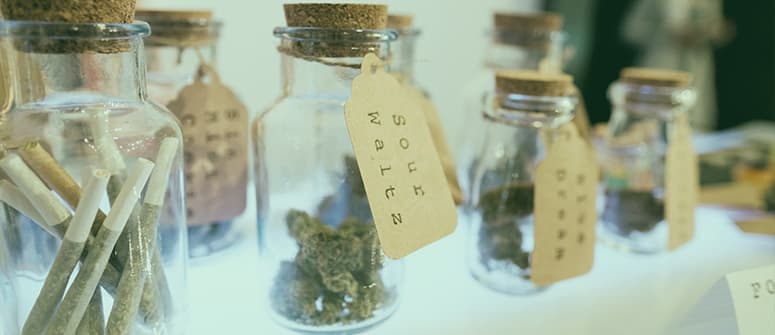
If you're lucky enough to live in an area where cannabis is legal, always shop for products that are labelled clearly. In the US, for example, most dispensaries should be able to provide information about the products they sell, including their cannabinoid content and ingredients list (in the case of edibles, tinctures, or concentrates). If you do happen to see anything sketchy in the ingredients list, perhaps steer clear of that product. Furthermore, a good budtender should be able to guide you in the direction of a quality bud that's been prepared to the highest standards.
AVOID WEED CONTAMINATION BY GROWING YOUR OWN
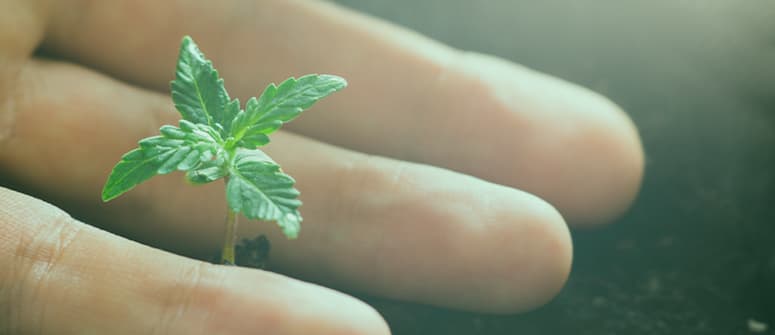
Cannabis is a versatile plant beloved by mankind, but given that it is still illegal in most parts of the world, the quality of weed—especially that which is bought on the black market—can be jeopardised by a variety of threats. Even in regions where cannabis legalization has already swept through, regulating the cultivation and handling of cannabis is still in its infancy, meaning subpar weed still makes it onto the shelves of legal retailers. Therefore, the best way to ensure you only smoke the best bud is to grow it yourself. Luckily, cannabis is a noble plant that can be cultivated in gardens and grow rooms of all shapes, sizes, and conditions, and quality seed banks are making it easier than ever to grow high-quality genetics at home.
References:
1. Serrin, G. Cannabis flower recalled due to mold contamination, California's DCC says. KRCA. January 22, 2022. Accessed June 5, 2022.
2. State of California. Testing laboratories. Department of Cannabis Control. Published 2022. Accessed June 5, 2022.
3. Moore, C. California Cannabis Industry Faces Supply Shortage Due to Testing Backlog. Merry Jane. Published August 8, 2018. Accessed Jun 5, 2022.
4. Vedantam, K. Cannabis Companies in California Have Lost Millions Due To Poor Regulations. California’s New Bill Could Change That. DotLA. Published January 3, 2022. Accessed June 5, 2022.
5. Moker, S. Synthetic Weed Is Becoming A Problem In The Netherlands. International High Life. Published January 5, 2021. Accessed June 5, 2022.
6. Busse et al. Lead Poisoning Due to Adulterated Marijuana in Leipzig. Dtsch Arztebl Int. 2008;105(44). 10.3238/arztebl.2008.0757
7. Thompson et al. A microbiome assessment of medical marijuana. ESCMID. 2017;23(4). https://doi.org/10.1016/j.cmi.2016.12.001
8. Center for Disease Control And Prevention. About Aspergillosis. Center for Disease Control And Prevention. Accessed June 5, 2022.
9. Shapiro, B. et al. Cryptococcal meningitis in a daily cannabis smoker without evidence of immunodeficiency. BMJ Case Rep. 2018. 10.1136/bcr-2017-221435
.jpg)
.jpg)

.jpg)
